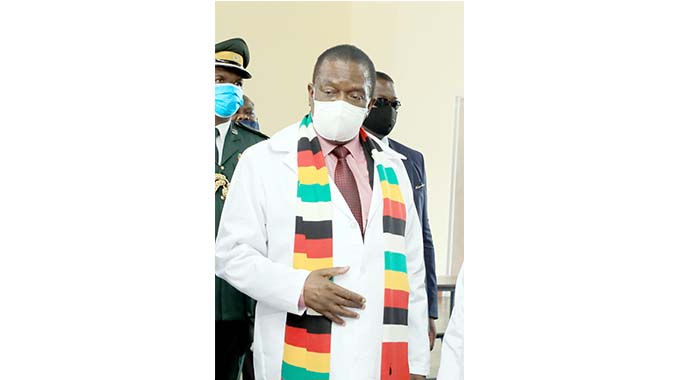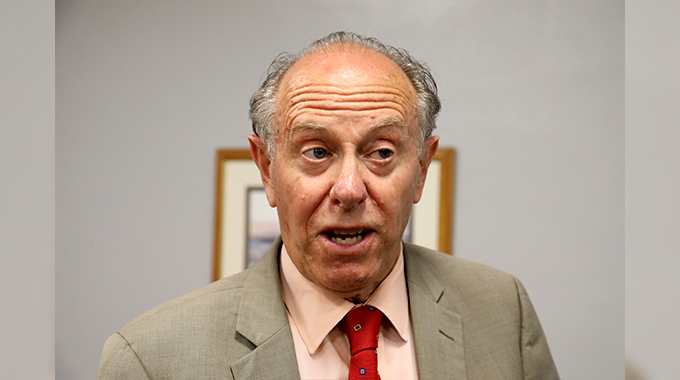A closer look at testicular cancer

Dr Tatenda Simango
I HOPE you are well and in good health as your read this.
With Covid-19 cases on the rise, this is a good time to remind one another of the prevention protocols for the pandemic; remember to mask up, wash your hands and maintain physical distancing.
Bulawayo has, unfortunately been beset by increasing diarrhoea cases and to help in the prevention of these, particular care should be given to drinking water. If taken straight from the tap, drinking water may cause vomiting and watery stool. To avoid this, it can be boiled or treated with chlorine.
Now, November, as many of you will know, is referred to as ‘‘Movember’’. The month is marked by men growing their moustaches and beards to raise awareness on prostate and testicular cancer; and men’s mental health. Now, in week three, let’s take a closer look at testicular cancer.
Fortunately, testicular cancer is not a common cancer, and when it does occur it can be picked up at early stages and cured.
The testicles are the two oval-shaped male organs that sit inside the scrotum on either side of the penis. They are an important part of the male reproductive system because they produce sperm and the hormone testosterone, which plays a major role in male sexual development.
Factors that may increase your risk of testicular cancer include:
- An undescended testicle (cryptorchidism). The testes form in the abdominal area during foetal development and usually descend into the scrotum before birth. Men who have a testicle that never descended are at greater risk of testicular cancer than men whose testicles descended normally. The risk remains elevated even if the testicle has been surgically relocated to the scrotum. Still, the majority of men who develop testicular cancer don’t have a history of undescended testicles.
Abnormal testicle development — Conditions that cause testicles to develop abnormally such as Klinefelter syndrome, may increase your risk of testicular cancer.
Family history — If family members have had testicular cancer, you may have an increased risk.
Testicular cancer affects teens and younger men, particularly those between ages 15 and 35. However, it can occur at any age. - Testicular cancer is more common in white men than in black men.
Symptoms of testicular cancer may include:
- A painless lump or swelling on either testicle. If found early, a testicular tumour may be about the size of a pea or a marble, but it can grow much larger.
Pain, discomfort, or numbness in a testicle or the scrotum, with or without swelling.
Change in the way a testicle feels or a feeling of heaviness in the scrotum. For example, on testicle may become firmer than the other testicle or testicular cancer may cause the testicle to grow bigger or to become smaller.
Dull ache in the lower abdomen or groin
Sudden build-up of fluid in the scrotum
Breast tenderness or growth. Although rare, some testicular tumours make hormones that cause breast tenderness or growth of breast tissue, a condition called gynecomastia.
Lower back pain, shortness of breath, chest pain, and bloody sputum or phlegm can be symptoms of later-stage testicular cancer.
Swelling of one or both legs or shortness of breath from a blood clot can be symptoms of testicular cancer. A blood clot in a large vein is called deep venous thrombosis or DVT. A blood clot in an artery in the lung is called a pulmonary embolism and causes shortness of breath. For some young or middle-aged men, developing a blood clot may be the first sign of testicular cancer.
Change in size or a lump in a testicle
A cyst called a spermatocele that develops in the epididymis. The epididymis is a small organ attached to the testicle that is made up of coiled tubes that carry sperm away from the testicle. - An enlargement of the blood vessels from the testicle called a varicocele.
A build-up of fluid in the membrane around the testicle called a hydrocele.
An opening in the abdominal muscle called a hernia. - Pain
Infection of the testicle is called orchitis. Infection of the epididymis is called epididymitis. If infection is suspected, a patient may be given a prescription for antibiotics. If antibiotics do not solve the problem, tests for testicular cancer are often needed.
Injury
Twisting
Having understood its symptoms it is important to bear in mind that testicular cancer is highly treatable, even when cancer has spread beyond the testicle; however, there’s no way to prevent it.
The most common type of testicular cancer is germ cell testicular cancer, which accounts for around 95 percent of all cases. Germ cells are a type of cell that the body uses to create sperm; and there are two main types of germ cell, namely:
- seminomas — which have become more common in the past 20 years and now account for 40 to 45 percent of testicular cancers
non-seminomas — which account for most of the rest and include teratomas, embryonal carcinomas, choriocarcinomas and yolk sac tumours
Both types tend to respond well to chemotherapy.
You can have an artificial (prosthetic) testicle inserted into your scrotum so the appearance of your testicles is not greatly affected.Having both testicles removed will definitely stop you from producing testosterone.
Testosterone replacement therapy is where you’re given testosterone in the form of an injection, skin patch or gel to rub into your skin.
If you have injections, you’ll usually need to have them every two to three months.
After having testosterone replacement therapy, you’ll be able to maintain an erection and your sex drive will improve. You may be able to bank your sperm before having a bilateral orchidectomy to allow you to father children if you decide to.
’Till next week, stay well and in good health.










Comments